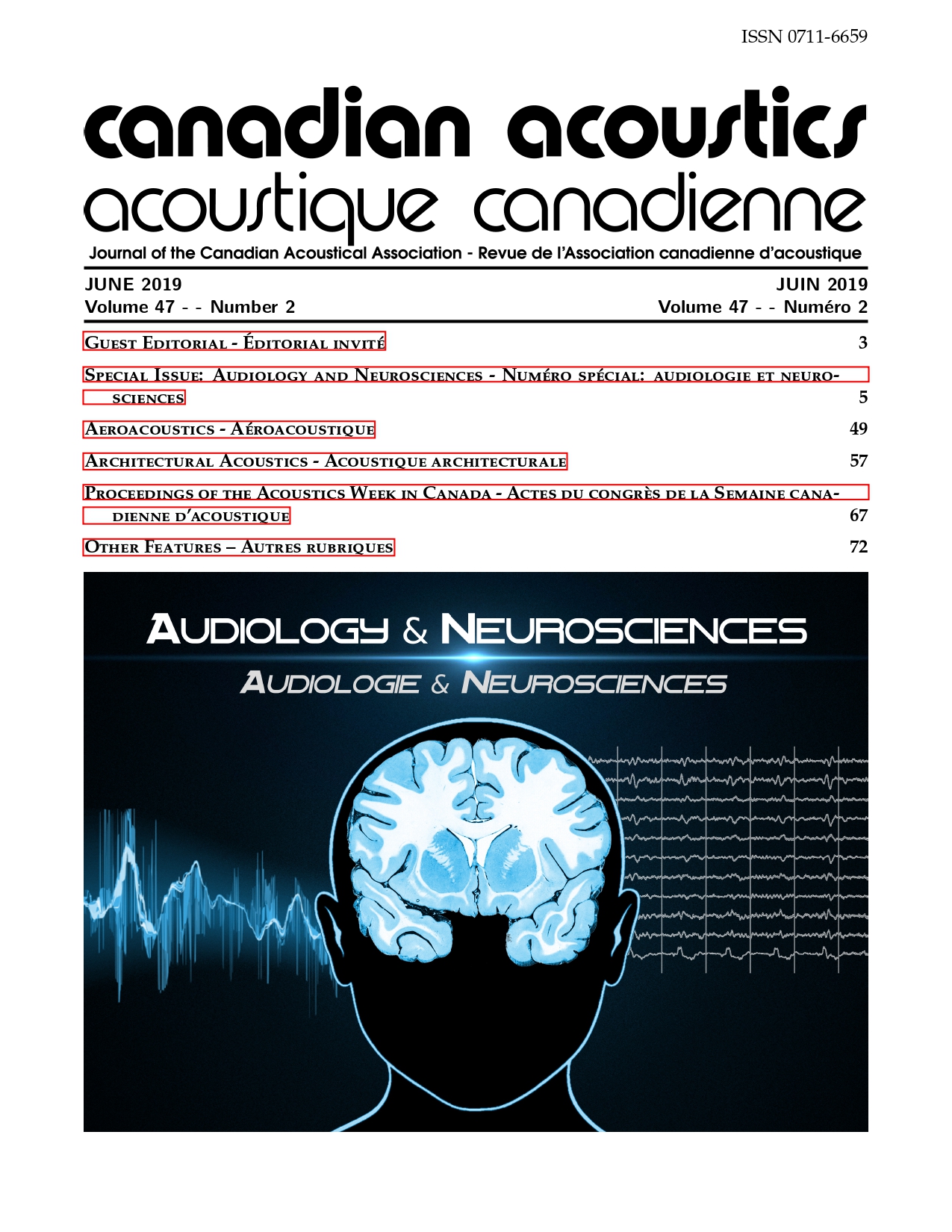Using the Auditory Brainstem Response Elicited by Within-Channel Gaps to Measure Temporal Resolution
Keywords:
ABR, electrophysiology, temporal resolution, gap detectionAbstract
The Auditory Brainstem Response (ABR) can be used to measure the early temporal activity of the auditory system. A gap-in-noise ABR has been developed to measure the electrophysiological response to auditory stimulation without attending to the task. In the present study, 15 young adults passively listened to stimuli of various gap widths in separate sequences. In a single sequence, two identical 15 ms filtered noise bursts, with a center frequency of either 750 or 3750 Hz, were presented separated by a gap (2, 5, 10, 20, 30, 40 or 50 ms in duration), with the second noise burst followed by an interstimulus interval of no less than 50 ms. An ABR was recorded at the onset of the first noise burst before the gap (pre-gap) and at onset of the second noise burst (i.e. at the offset of the gap, post-gap). The amplitude of wave V elicited after the gap increased as the gap duration grew larger, whereas the wave V before the gap, the control, remained relatively constant. A significant difference was found between the amplitude of wave V elicited before and after the gap for gap durations equal to and below 20 ms and 5 ms, for 750 and 3750 Hz, respectively. The gap-in-noise ABR can potentially provide frequency-specific information for the study of temporal resolution in populations with a variety of hearing disorders.
Additional Files
Published
How to Cite
Issue
Section
License
Author Licensing Addendum
This Licensing Addendum ("Addendum") is entered into between the undersigned Author(s) and Canadian Acoustics journal published by the Canadian Acoustical Association (hereinafter referred to as the "Publisher"). The Author(s) and the Publisher agree as follows:
-
Retained Rights: The Author(s) retain(s) the following rights:
- The right to reproduce, distribute, and publicly display the Work on the Author's personal website or the website of the Author's institution.
- The right to use the Work in the Author's teaching activities and presentations.
- The right to include the Work in a compilation for the Author's personal use, not for sale.
-
Grant of License: The Author(s) grant(s) to the Publisher a worldwide exclusive license to publish, reproduce, distribute, and display the Work in Canadian Acoustics and any other formats and media deemed appropriate by the Publisher.
-
Attribution: The Publisher agrees to include proper attribution to the Author(s) in all publications and reproductions of the Work.
-
No Conflict: This Addendum is intended to be in harmony with, and not in conflict with, the terms and conditions of the original agreement entered into between the Author(s) and the Publisher.
-
Copyright Clause: Copyright on articles is held by the Author(s). The corresponding Author has the right to grant on behalf of all Authors and does grant on behalf of all Authors, a worldwide exclusive license to the Publisher and its licensees in perpetuity, in all forms, formats, and media (whether known now or created in the future), including but not limited to the rights to publish, reproduce, distribute, display, store, translate, create adaptations, reprints, include within collections, and create summaries, extracts, and/or abstracts of the Contribution.


